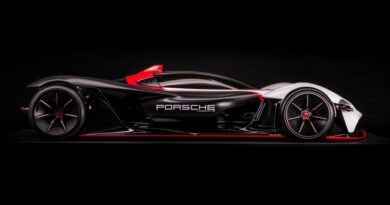Why rural Australians could lead the EV V2G charge
Rural and regional Australia could lead the way on utilising cars as home electricity storage solutions, according to the head of EV infrastructure provider Jet Charge.
Founder Tim Washington (pictured above) believes farmers and rural residents could be among the early adopters of EVs that can feed electricity back into the grid or power a house.
“We have regional customers who can’t wait,” said Washington of the opportunities with V2G technology.
The Mitsubishi Outlander PHEV and Nissan Leaf (and Leaf e+) are the first cars that have bi-directional capability – allowing the car to send electricity a house or office or back into the electricity grid.
Clearly the Leaf has the most appeal due to its larger battery capacity – 40kWh for the regular Leaf and 62kWh for the Leaf e+ – and Washington believes it will be evaluated by those who currently rely on other means for electricity.
“They’re [rural residents] some of the most advanced adopters of technologies – the most aggressive adopters of technology – because they’ve had to be so autonomous.
“They’re just waiting for fit-for-purpose vehicles.”
Washington says the Leaf e+ could allow some country people to shut down the diesel generators and/or go off the grid.
“They don’t have 10 kilowatts of solar, they’ve got 30, 40, 50 [kW]. They can’t wait to store all that solar [electricity].”
And Washington believes a car makes more sense for many than a home battery.
“Why would you have a home battery when you can have literally five times as much capacity?”
Viewed purely as a battery, the Leaf e+ is commensurate with a Tesla Powerwall on the cost of storage per kilowatt hour.
A single Powerwall has 13.5kWh of battery capacity and costs $13,300 plus installation costs. Additional units can then be added for $11,600 each.
To match the Leaf e+’s 62kWh capacity you’d need to spend between $48,100 (four Powerwalls with 54kWh of capacity) and $59,700 (five Powerwalls and 67.5kWh capacity) plus installation.
A new Leaf e+ costs $62,490 plus on-road costs and has the ability to provide transport as a bonus.

Of course, if an EV was the sole power supply for the house storing solar energy produced during the day there would be limitations on when you could drive it. Cloudy days and at night time would mean leaving the car plugged in, unless there’s a small stationary battery as backup.
But many country properties already have multiple cars, allowing flexibility with when the EV is taken off its battery storage duties.
V2G also requires hardware that currently hasn’t been certified by the Australian Government.
Washington says that regulatory approval will happen “this year”, but even then, the wallbox is likely to cost $8000 or more.
As for why other EVs currently don’t offer vehicle-to-grid or vehicle-to-infrastructure charging, it partly comes down to the plug.
Both the Leaf and Outlander PHEV uses CHAdeMO plugs that have largely been replaced by the Type 2 CCS plugs for most Australian EVs. CHAdeMO currently has vehicle to grid capability whereas it’s still being developed for Type 2 CCS.
While Nissan and Mitsubishi are the first to offer V2G capability in Australia, other car makers are working on it. Audi is one that has plans to develop future EVs with V2G tech.




